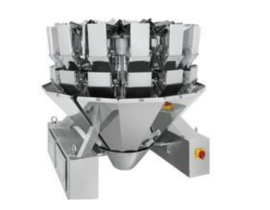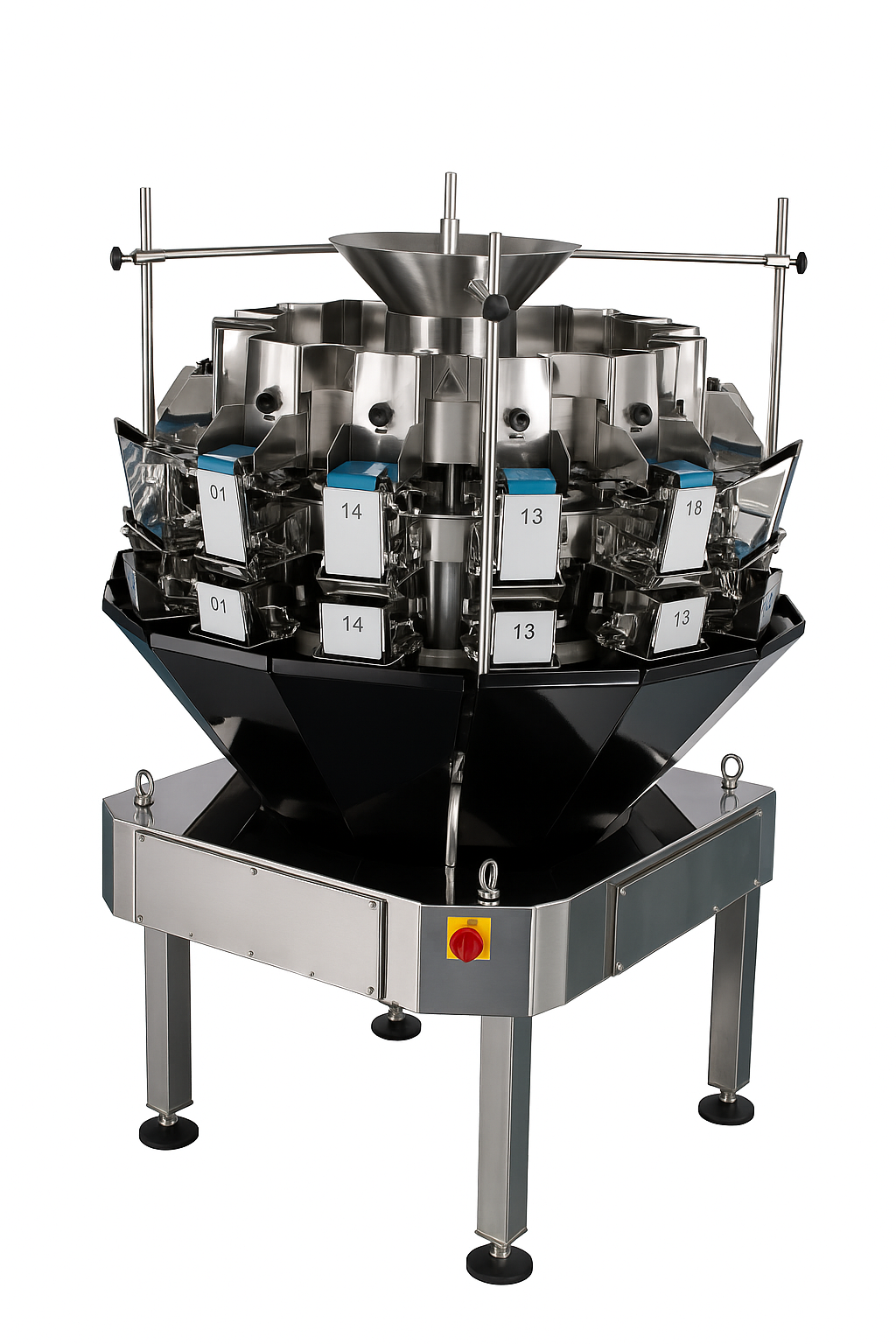In the quest for high-precision weighing with a multihead weigher, understanding both your product’s characteristics and your production requirements is essential. Nevertheless, the foundation starts with a critical decision: choosing the right multihead weigher tailored specifically to your product and operational demands. Making the wrong choice is akin to driving a Formula 1 car on a rocky mountain road—regardless of its advanced features, it won’t perform at its best.
This article aims to systematically guide you through matching material traits and production capacity with the ideal multihead weigher configuration. Ultimately, it helps you make smarter investment decisions that improve both accuracy and efficiency.
1. Know Your Product: Material Characteristics
Your product’s nature significantly impacts the multihead weigher’s design and setup.
✅ Flowability
Para free-flowing materials like rice, sugar, or candy, a standard multihead weigher such as the FPW-10 ou FPW-14, equipped with vibratory feeders and standard hoppers, usually suffices.
When handling moderate flowability products such as chips, nuts, or frozen vegetables, more precise vibration control (adjusting amplitude and frequency) and specially designed distribution chutes become necessary. Therefore, a multihead weigher like the FPW-14 fits best.
By contrast, poor flowability materials—including sticky dried fruits, wet pet food, or powdered sugar—demand specialized solutions. Here, weighers like the FPW-14S or FPW-16A, equipped with screw feeders, belt feeders, agitators, anti-stick coatings (such as Teflon), larger hopper openings, and automated cleaning systems, are essential to keep your line running smoothly.
✅ Fragility
Delicate products such as potato chips and cookies require gentle-handling weighers (e.g., FPW-14F or FPW-16 Gentle series) that provide soft landing designs, gentle vibrations, and cushioned chutes to prevent damage.
On the other hand, robust items like beans, nuts, and candies are typically well-suited for balanças multicabeçotes padrão such as FPW-10 or FPW-12.
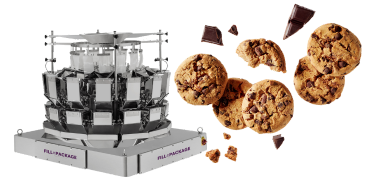
✅ Stickiness, Moisture, and Oil Content
Sticky or oily foods—including wet snacks, oily nuts, and marinated meats—necessitate weighers equipped with mirror-polished surfaces, anti-stick coatings, air-blast cleaning systems, and anti-static devices. For these, FPW-14T e FPW-16 Anti-stick series are ideal choices.
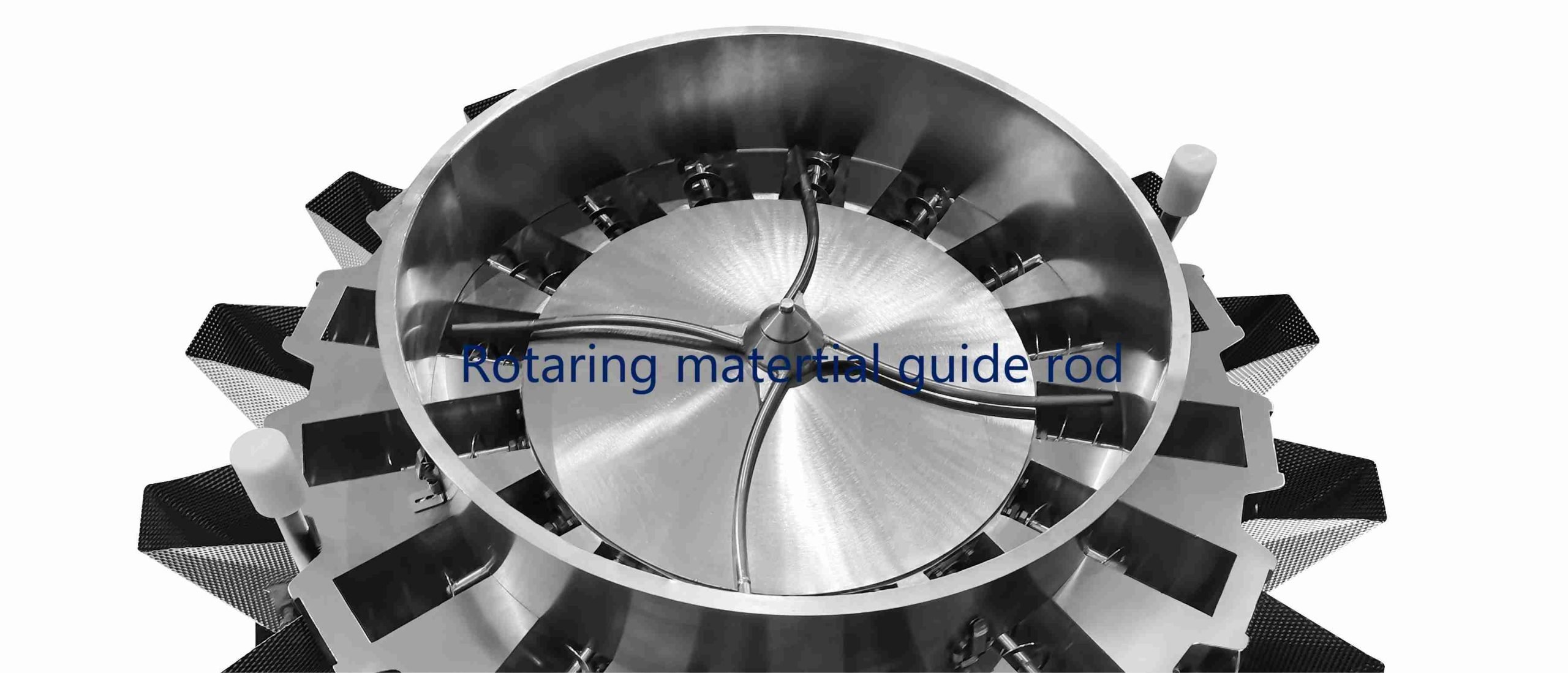
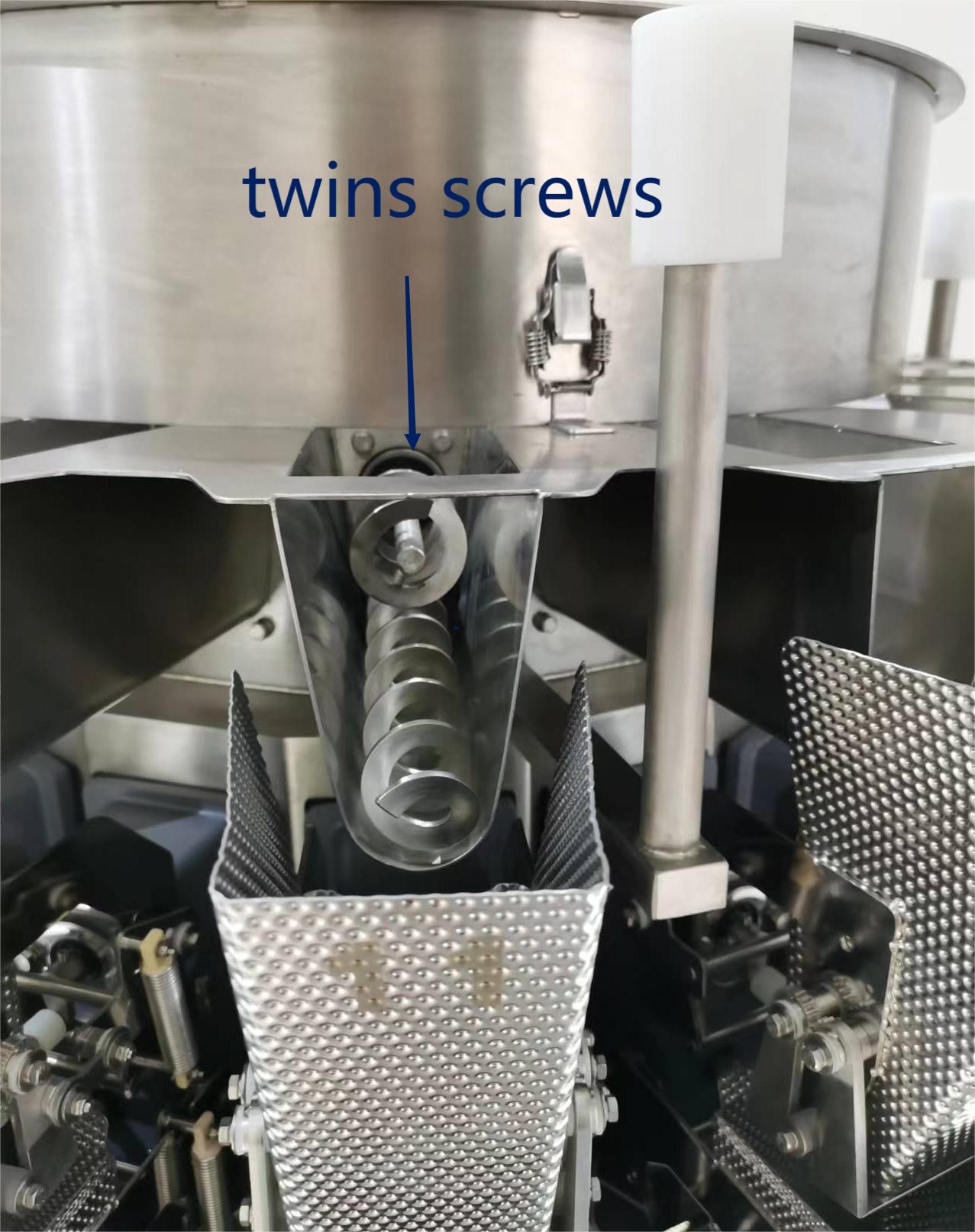
✅ Particle Size and Consistency
Fine powders like seasoning powders, milk powders, or coffee require dust-tight weighers (e.g., FPW-14P Powder Special) with enclosed hoppers, sealed feeder trays, anti-static features, and dust extraction.
Meanwhile, large chunks such as frozen vegetables, chocolate pieces, or poultry require robust weighers like the FPW-16L Large Product Special, designed with large-capacity hoppers, reinforced structures, and wide product flow channels.
2. Defining Your Production Capacity: Know Your Numbers
Production capacity plays a decisive role in determining the size and configuration of your multihead weigher.
Calculating Required Capacity (Packs per Minute):
It’s crucial not to rely solely on theoretical peak speeds. Instead, factor in real-world influences such as production schedules, shift durations, cleaning and changeover downtime, plus anticipated future growth.
Formula:
Required capacity (packs/min) = (Daily target production ÷ Net pack weight) ÷ (Effective production time in minutes × Line efficiency factor)
The line efficiency factor, often called OEE, generally ranges between 0.7 and 0.85 (70%-85%) depending on your equipment’s reliability and changeover efficiency.
Important Factors Influencing Capacity
-
Number of Weigh Heads:
This has a direct impact on both speed and precision. More heads offer increased flexibility and faster combination calculations, which translate into faster and more accurate packaging. Common head counts are 10, 12, 14, 16, 18, or even 20+. -
Hopper Layers:
- Single-layer weighers feature only weighing hoppers, making them economical but somewhat slower and less precise.
- Dual-layer weighers combine buffer and weighing hoppers, representing the most balanced and popular configuration.
- Triple-layer systems add an additional temporary storage layer to greatly enhance speed and accuracy, especially in high-capacity lines. Note: ISHIDA currently leads in reliable triple-layer models; exercise caution with other brands.
-
Combination Algorithm Efficiency:
Advanced algorithms accelerate the search for optimal weight combinations, increasing throughput. -
Material Characteristics and Settings:
Variables such as feeding speed, vibration time, stabilization duration, and discharge intervals all influence overall performance.
Speed Estimation Formula (Simplified):
Theoretical max speed ≈ (Number of heads × Hopper layers) ÷ (Average weighing cycle time)
Cycle time usually varies between 1.0 to 3.0 seconds per cycle, depending heavily on material properties and equipment.
Choosing by Capacity
- Para high capacity requirements (over 120 packs/min), consider 14 or more heads combined with dual or triple-layer designs (e.g., FPW-14, FPW-16).
- Para medium capacity needs (60-120 packs/min), 10-12 heads with single or dual-layer configurations (e.g., FPW-10, FPW-12) often suffice.
- Para low capacity lines (under 60 packs/min), 8-10 heads with single-layer weighers (e.g., FPW-8, FPW-10 standard) are appropriate.
Defining your capacity goals clearly ensures you select the perfect multihead weigher for your operation.
3. From Needs to Specifications: Configuring Smartly
Once material and capacity considerations are clear, translate them into equipment specs:
| Recurso | Material Consideration | Capacity Consideration | Recommended Models |
|---|---|---|---|
| Number of Heads | Poor flowability or uneven particles → More heads needed | High capacity → 14+ heads | FPW-14, FPW-16 |
| Hopper Layers | Large packaging → Multiple layers | High capacity / large packs → Dual or triple layers | FPW dual-layer, FPW triple-layer |
| Sistema de alimentação | Poor flowability → Special feeders | High capacity → Robust feeding | FPW-14S, FPW-16A |
| Main Feeder Design | Sticky/moist products → Anti-stick design | High capacity → Optimized flow | FPW-14T, FPW-16 Anti-stick |
| Hopper Materials/Surface | Corrosive or hygienic needs → Specialized coatings | – | 304/316L Stainless Steel, Teflon |
| Cleaning System | Sticky/moist materials → Automated cleaning | – | FPW Auto-cleaning systems |
| Sensors | High precision needed → Sensitive sensors | – | High precision sensors |
Conclusion: Choosing Wisely Is Half the Battle
Selecting the right multihead weigher goes beyond picking a model from a catalog. Instead, it requires carefully matching your product’s unique traits and production demands to the capabilities of the machine. Doing so guarantees sustainable accuracy and productivity.
To sum up:
-
Deeply understand your product.
-
Clearly define your production capacity goals.
-
Test and validate before purchase.
-
Keep a long-term perspective on compatibility and after-sales support.
By following this comprehensive approach, your multi-head weigher will become a key asset—delivering consistent quality, operational efficiency, and a competitive edge in today’s food packaging market.
Ready to elevate your packaging line?
Contact us today for personalized advice and tailored multihead weigher solutions designed to fit your exact product and production needs. Let’s work together to optimize your packaging precision and efficiency!


